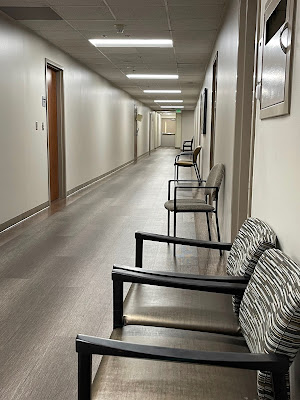Who knows?
For several years now I've been writing these "What's Coming" posts. You can read the 2023 post with links to earlier ones here. I include a wish list of topics I hope to cover, and look at past lists to see which ones I managed to write and which I didn't. There's more wishing than achievement in these lists, but here we are for 2024. I don't think I've written a single post from the 2023 list, so let's move on.
I should note I'm pushing very close to 900 articles on this blog--only two or three more to go. I started this thing in March 2014, so its tenth anniversary is also coming up. These thoughts are making me tired....
One piece I really hope to do this year is a look at the career of R.G. Armstrong. Alabama has produced at least three very prolific film & TV actors. One was Henry Walthall, a Shelby County native who appeared in dozens of silent and sound films--including the notorious The Birth of a Nation--before his death in 1936. I plan a post on him soon, too. Another was Huntsville native Harry Townes, who made numerous appearances mostly on television between the late 1940s and late 1980s. I've written about him here. R.G. Armstrong had many performances on film and television, ranging from series such as Gunsmoke, Laramie, Rawhide, Daniel Boone and The Andy Griffith Show to movies such as El Dorado, Children of the Corn and Reds.
Armstrong appeared with fellow Alabama native Louis Fletcher in an episode of Maverick in 1959. Follow the link for my post about it.
Armstrong made three appearances in Perry Mason episodes. This one is "The Case of the Stand-In Sister" in 1962.
I'd also like to write a piece on Livingston Press, an independent publisher based at the University of West Alabama. Over recent decades the press has published dozens of books of fiction, non-fiction and poetry, many of them by Alabama authors. The guiding force behind the operation is Joe Taylor, an author himself and retired professor from the university.
Then there's a 1987 pamphlet in my collection about the Five Points South area in Birmingham. Fifty businesses and historical sites are listed, and I'm curious as to which ones are still around.
I really should do an item on Louisa Shepard, the first female to receive an MD in Alabama. Since this took place before the Civil War, she was unable to establish a practice, so she married and moved to Texas. Nevertheless, she is also the first female MD in the southern U.S. and one of the earliest in the country.
Just for fun, I'd like to do another entry in the "Empty Project: Alabama" series I recently started. So much emptiness....And I'm sure there will be more blog posts on fascinating photos, postcards and family memorabilia that I come across.


















































